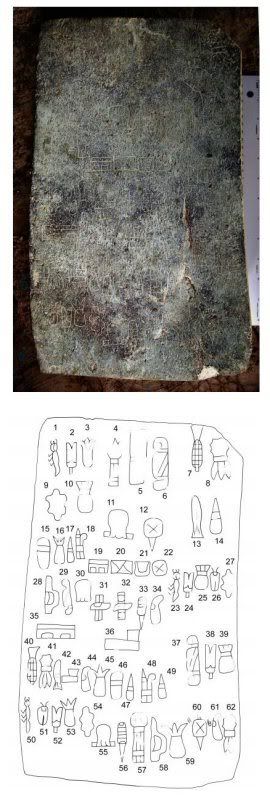The slab - named the Cascajal block - dates to the early first millennium BCE and has features that indicate it comes from the Olmec civilization of Mesoamerica. One of the archaeologists behind the discovery, Brown University's Stephen D. Houston, said that the block and its ancient script "link the Olmec civilization to literacy, document an unsuspected writing system, and reveal a new complexity to this civilization."

"It's a tantalizing discovery. I think it could be the beginning of a new era of focus on Olmec civilization," explained Houston. "It's telling us that these records probably exist and that many remain to be found. If we can decode their content, these earliest voices of Mesoamerican civilization will speak to us today."
Construction workers discovered the Cascajal block in a pile of debris in the community of Lomas de Tacamichapa in the late 1990s. Surrounding the piece were ceramic shards, clay figurine fragments, and broken artifacts of ground stone, which have helped the team date the block and its text to the San Lorenzo phase, ending about 900 BCE; approximately 400 years before writing was thought to have first appeared in the Western hemisphere.
The block weighs about 26 pounds and measures 36 cm x 21 cm x 13 cm. The text itself consists of 62 signs, some of which are repeated up to four times. There is no doubt that the piece is a written work, say the archaeologists. "As products of a writing system, the sequences would, by definition, reflect patterns of language, with the probable presence of syntax and language-dependent word order," they explain.
Interestingly, the surface containing the text appears to be concave and the team believes the block has been carved repeatedly and erased - an unprecedented discovery according to Houston, who added that several paired sequences of signs could even indicate poetic couplets."
Source: Brown University
Pics courtesy Science




No comments:
Post a Comment